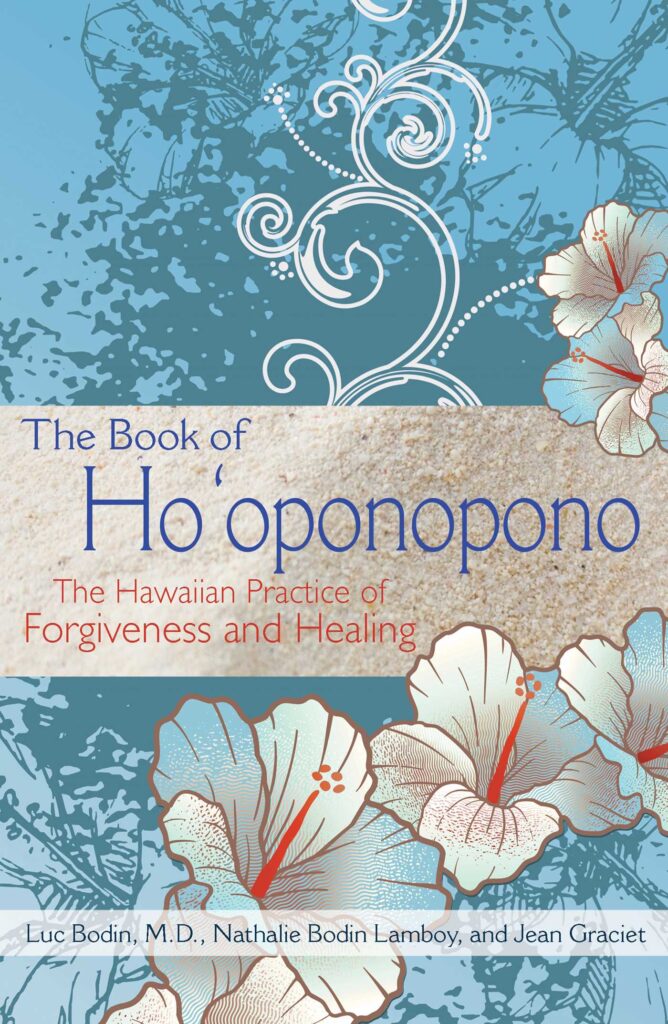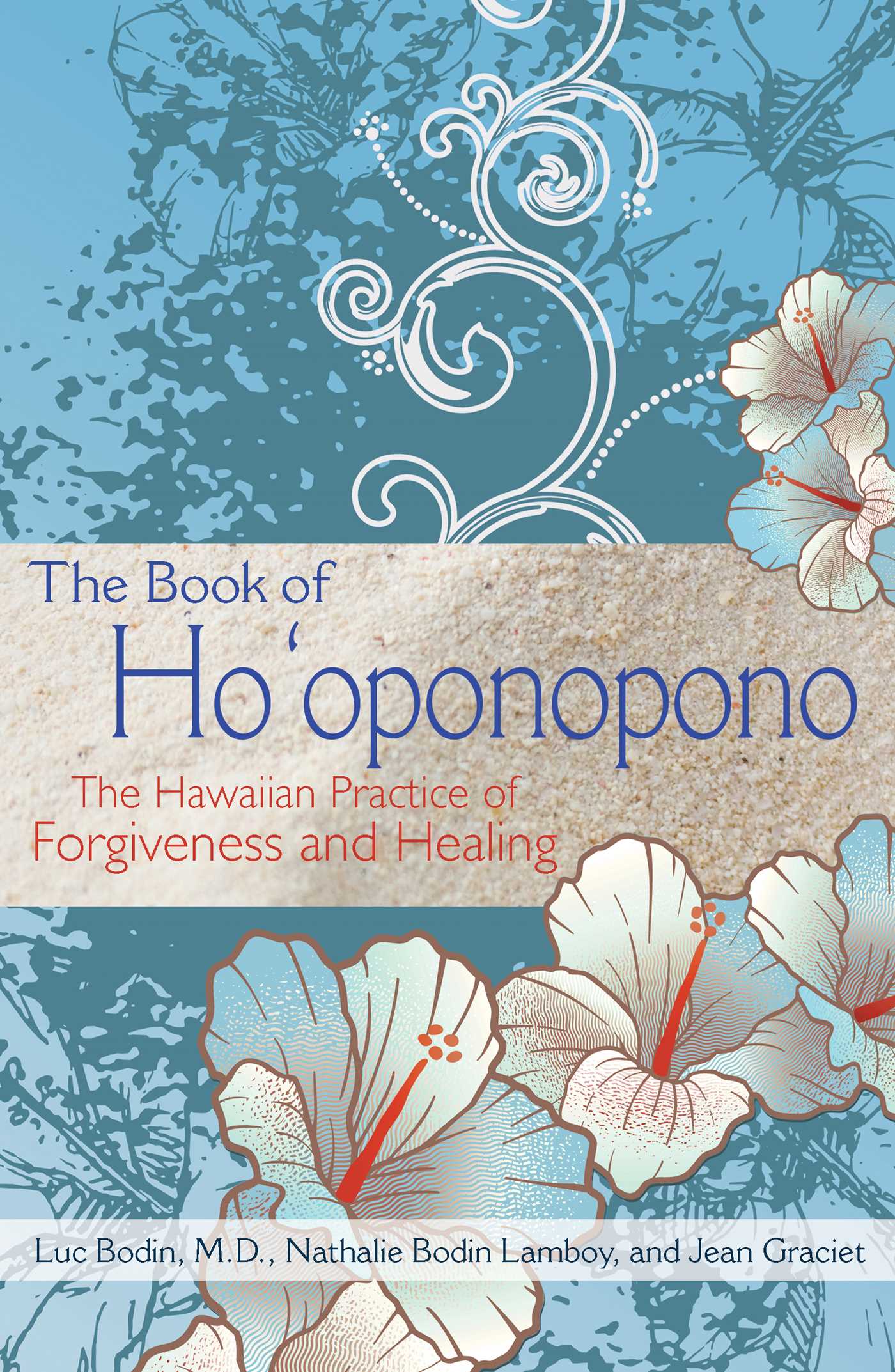Imagine a world where conflicts are resolved with forgiveness, compassion, and understanding. A world where healing and connection are prioritized above all else. This is the world that Ho’oponopono, a traditional Hawaiian practice, aims to create. By focusing on self-compassion and taking responsibility for our own emotions, Ho’oponopono profoundly impacts interpersonal communication. It teaches us to release negativity, heal relationships, and foster a deep sense of empathy. In this article, we will explore the transformative power of Ho’oponopono and how it can enhance our interactions with others.
Understanding Ho’oponopono
Ho’oponopono is an ancient Hawaiian practice that has gained popularity in recent years for its powerful impact on healing and reconciliation. The word itself can be translated to mean “to make right” or “to correct,” and it centers around the idea of taking responsibility for one’s actions and seeking forgiveness. This practice aims to restore harmony in relationships, both within oneself and with others, through a process of deep introspection and forgiveness.
Origins and meaning of Ho’oponopono
Ho’oponopono has deep roots in Hawaiian culture, dating back to ancient times. It was traditionally practiced within families and communities as a way to resolve conflicts and restore harmony. The word “ho’oponopono” is derived from two Hawaiian words: “ho’o” meaning ‘to make’ and “ponopono” meaning ‘right.’ This implies that the purpose of this practice is to set things right, to bring about balance and healing.
Basic principles of Ho’oponopono
At the core of Ho’oponopono are four main principles: repentance, forgiveness, gratitude, and love. The practice encourages individuals to take responsibility for their thoughts, words, and actions, acknowledging that their behavior can affect others in profound ways. By cultivating a sense of repentance, individuals can acknowledge their imperfections and seek forgiveness from themselves and others. Expressing gratitude and love helps to foster a deep sense of connection and understanding.
Role of forgiveness and reconciliation in Ho’oponopono
Forgiveness and reconciliation play a crucial role in the practice of Ho’oponopono. By recognizing the impact of our actions on others, we can begin to take responsibility for repairing the damage caused. Through sincere apologies and acts of forgiveness, relationships can be healed and strengthened. The process of forgiveness in Ho’oponopono is not only about releasing resentment towards others but also about forgiving oneself for past mistakes and embracing self-love.
The Connection Between Ho’oponopono and Interpersonal Communication
Recognizing the impact of communication on relationships
Effective communication is the cornerstone of healthy relationships. It is through communication that we express our desires, share our thoughts and feelings, and connect with others on a deeper level. However, communication can also be a source of misunderstandings and conflicts if not handled with care. Ho’oponopono recognizes the profound impact communication has on relationships and offers tools to navigate and repair any breakdowns that may occur.
Importance of self-awareness in interpersonal communication
Self-awareness is a fundamental aspect of interpersonal communication, and Ho’oponopono emphasizes the cultivation of this awareness. By becoming aware of our own patterns, biases, and triggers, we can better understand how these aspects of ourselves influence our communication with others. Self-awareness allows us to take responsibility for our actions and reactions, promoting empathy and understanding in our interactions.
Using Ho’oponopono to cultivate empathy and understanding
Ho’oponopono provides a framework for cultivating empathy and understanding in interpersonal communication. By acknowledging our own imperfections and seeking forgiveness for our own shortcomings, we can develop a deeper sense of empathy for others. When we approach conversations with a genuine desire to understand the perspectives and experiences of others, we create a space for open and compassionate communication to take place.

Ho’oponopono Techniques for Interpersonal Communication
Cleaning and letting go of emotional baggage
One of the key techniques in Ho’oponopono is the practice of cleaning and letting go of emotional baggage. This involves recognizing and acknowledging any negative emotions, resentments, or grudges that we may be carrying towards others. Through the process of cleaning, we release these emotions, allowing space for healing and reconciliation. This practice helps to create a fresh start in our relationships, free from the burden of past conflicts.
Practicing active listening and non-judgment
Active listening and non-judgment are essential skills in effective interpersonal communication. Ho’oponopono encourages individuals to practice truly listening to others without judgment or interruption. By giving the speaker our undivided attention, we show respect and validate their experiences. This practice fosters deeper understanding and connection, allowing for more meaningful and authentic communication.
Applying the mantra ‘I’m sorry, please forgive me, thank you, I love you’
The mantra “I’m sorry, please forgive me, thank you, I love you” is a powerful tool in Ho’oponopono for resolving conflicts and promoting healing. By sincerely apologizing for any harm or hurt caused, we acknowledge our responsibility in the situation. Expressing gratitude and love towards the other person helps to create a space of compassion and understanding. This mantra can be repeated internally or shared with the other person directly, depending on the circumstances.
Using visualization and affirmation techniques
Visualization and affirmation techniques can be utilized in Ho’oponopono to reinforce positive communication patterns. By visualizing healthy and harmonious interactions with others, we can shift our mindset and set the intention for positive change. Affirmations, such as “I am open to understanding others” or “I communicate with love and respect,” can be repeated regularly to reinforce desired behaviors and attitudes in our communication.
Improving Conflict Resolution Through Ho’oponopono
Addressing conflicts with compassion and forgiveness
Conflict resolution is an essential skill in any relationship, and Ho’oponopono offers a unique approach based on compassion and forgiveness. When conflicts arise, it is crucial to approach them with a genuine desire to understand the other person’s perspective and seek resolution. By taking responsibility for our actions and reactions, we can foster an environment of compassion and forgiveness, allowing for healing and growth within the relationship.
Promoting open communication and dialogue
Ho’oponopono promotes open communication and dialogue as a means of resolving conflicts. When conflicts occur, it is essential to create a safe and non-judgmental space for both parties to express their thoughts and feelings. Through active listening and empathetic responses, genuine understanding can be fostered, leading to effective conflict resolution.
Taking responsibility for one’s actions and reactions
One of the fundamental principles of Ho’oponopono is taking responsibility for one’s actions and reactions. In conflicts, it is not enough to solely focus on the other person’s behavior. By acknowledging how our own actions may have contributed to the conflict, we can take responsibility for our part, creating an environment of honesty and accountability. This approach allows for a more productive resolution process.
Healing and repairing damaged relationships
Ho’oponopono provides a pathway for healing and repairing damaged relationships. Through the practice of forgiveness and reconciliation, individuals can work towards rebuilding trust and repairing the emotional wounds caused by conflicts. By fostering open and honest communication, individuals can address underlying issues and find resolution, ultimately leading to stronger and more resilient relationships.

Ho’oponopono and Building Trust in Interpersonal Relationships
Rebuilding trust through Ho’oponopono practices
Trust is the foundation of any healthy relationship, and Ho’oponopono offers valuable practices for rebuilding trust. By taking responsibility for past mistakes and seeking forgiveness, individuals show a genuine commitment to growth and change. Through consistent application of Ho’oponopono principles, trust can gradually be rebuilt, creating a stronger and more resilient bond between individuals.
Creating a safe and supportive environment for communication
Ho’oponopono emphasizes the importance of creating a safe and supportive environment for communication. By fostering a non-judgmental space where individuals feel comfortable expressing their thoughts and feelings, trust can be nurtured. Active listening, empathy, and validation are key components of creating such an environment, encouraging open and authentic communication.
Fostering a sense of transparency and vulnerability
Ho’oponopono encourages individuals to cultivate a sense of transparency and vulnerability in their relationships. By being open and honest about our thoughts, feelings, and fears, we create an environment where trust can flourish. This practice promotes genuine connection and fosters a deeper understanding of each other’s needs and desires.
The Role of Ho’oponopono in Resolving Communication Breakdowns
Identifying common causes of communication breakdowns
Ho’oponopono can help individuals navigate and resolve common causes of communication breakdowns. These breakdowns can arise from misunderstandings, lack of active listening, unresolved conflicts, or emotional baggage. By recognizing and addressing these underlying issues, individuals can start to rebuild effective communication channels.
Applying forgiveness and understanding to address misunderstandings
Misunderstandings often stem from miscommunication, differing perspectives, or assumptions. Ho’oponopono encourages individuals to approach misunderstandings with a mindset of forgiveness and understanding. By seeking clarity, asking questions, and genuinely listening to the other person’s point of view, misunderstandings can be addressed and resolved.
Promoting effective communication strategies
Ho’oponopono promotes the use of effective communication strategies to prevent and resolve breakdowns. This includes clear and concise expression of thoughts and feelings, active listening, and validation of the other person’s experiences. By fostering open and respectful communication, individuals can minimize the occurrence of breakdowns and create a foundation for healthy relationships.
Cultivating patience and empathy in challenging situations
Challenging situations can put a strain on communication, leading to breakdowns. Ho’oponopono encourages individuals to cultivate patience and empathy in these situations. By taking a step back, breathing, and approaching the situation with an open mind, individuals can navigate challenging conversations with grace and compassion.

Ho’oponopono and Nonviolent Communication
Exploring the similarities between Ho’oponopono and Nonviolent Communication
Ho’oponopono and Nonviolent Communication share many similarities in their approaches to interpersonal communication and conflict resolution. Both emphasize taking personal responsibility, active listening, and empathy. Nonviolent Communication focuses on expressing needs and feelings, while Ho’oponopono emphasizes forgiveness and reconciliation. Combining the principles of these two practices can create a harmonious and constructive approach to communication.
Utilizing Ho’oponopono principles to resolve conflicts peacefully
Ho’oponopono principles can be effectively utilized to resolve conflicts in a peaceful and nonviolent manner. By acknowledging one’s role in the conflict, seeking forgiveness, and expressing gratitude and love, individuals can disarm the situation and foster a sense of understanding. This approach allows for conflicts to be resolved without resorting to aggression or hostility.
Restoring harmony and balance in interpersonal relationships
Both Ho’oponopono and Nonviolent Communication aim to restore harmony and balance in interpersonal relationships. By applying the principles of these practices, individuals can foster a deeper understanding of each other’s needs and desires, leading to more harmonious interactions. The result is an environment where conflicts are minimized, and relationships thrive.
Applying Ho’oponopono in Professional Relationships
Enhancing workplace communication through Ho’oponopono
Ho’oponopono can greatly enhance workplace communication by fostering a culture of understanding and respect. By encouraging individuals to take personal responsibility for their actions, conflicts can be resolved in a constructive manner. This promotes effective collaboration, team cohesion, and a positive work environment.
Promoting understanding and collaboration among colleagues
Ho’oponopono promotes understanding and collaboration among colleagues by emphasizing forgiveness and empathy. By creating an environment where individuals feel safe expressing their thoughts and feelings, trust and respect can flourish. This, in turn, leads to more effective collaboration and harmonious teamwork.
Addressing conflicts constructively
Conflicts in the workplace are inevitable, but Ho’oponopono provides a framework for addressing conflicts constructively. By utilizing techniques such as active listening, non-judgment, and sincere apologies, conflicts can be approached with compassion and understanding. This helps to preserve relationships and maintain a positive work environment.
Creating a positive and harmonious work environment
Ho’oponopono contributes to the creation of a positive and harmonious work environment. By applying the principles of forgiveness, gratitude, and love, individuals can cultivate a sense of unity and cooperation. This leads to increased job satisfaction, productivity, and overall well-being within the workplace.

Ho’oponopono in Intercultural Communication
Recognizing the role of cultural differences in communication
Cultural differences can significantly impact communication, often leading to misunderstandings or conflict. Ho’oponopono recognizes the importance of acknowledging and respecting cultural differences in interpersonal communication. By cultivating empathy and seeking to understand different perspectives, individuals can bridge the gap between cultures and foster meaningful connections.
Using Ho’oponopono to bridge cultural gaps
Ho’oponopono can be used as a tool to bridge cultural gaps in communication. By approaching intercultural interactions with a mindset of forgiveness and understanding, individuals can break down barriers and build meaningful connections. Recognizing and appreciating diverse cultural perspectives fosters a sense of unity and promotes more effective communication.
Respecting and embracing diverse perspectives
Ho’oponopono encourages individuals to respect and embrace diverse perspectives in intercultural communication. By valuing and seeking to understand different cultural backgrounds, individuals can foster inclusivity and create environments where everyone’s voice is heard and respected. This approach leads to more enriching and authentic relationships.
Building cross-cultural relationships based on understanding
Building cross-cultural relationships is an essential aspect of intercultural communication. Ho’oponopono provides a framework for establishing and nurturing these relationships based on mutual understanding and respect. By practicing forgiveness and empathy, individuals can create a foundation of trust and vulnerability, leading to more meaningful and fulfilling cross-cultural connections.
The Limitations and Criticisms of Ho’oponopono in Interpersonal Communication
Cultural appropriation concerns
Ho’oponopono, as an ancient Hawaiian practice, has faced criticism for potential cultural appropriation. Some argue that the commercialization and widespread adoption of Ho’oponopono by non-Hawaiian individuals have diminished its cultural significance. It is important to approach Ho’oponopono with respect and understanding of its origins, acknowledging the cultural context from which it emerged.
Ho’oponopono as an individualistic approach
Ho’oponopono is often perceived as an individualistic approach to interpersonal communication, focusing primarily on personal responsibility and self-forgiveness. Critics argue that this individualistic emphasis may overshadow the importance of addressing systemic issues and power dynamics that can significantly impact communication. While self-reflection and personal growth are valuable, it is crucial to consider the broader social context in which communication takes place.
Potential oversimplification of complex communication issues
Critics also question the potential oversimplification of complex communication issues by applying Ho’oponopono principles. Communication breakdowns can arise from a variety of factors, including cultural differences, trauma, power imbalances, and systemic issues. Ho’oponopono, in its emphasis on personal responsibility and forgiveness, may not adequately address these complex dynamics in all situations. It is essential to incorporate multiple approaches and tools when addressing intricate communication issues.
The need for an integrative and multi-faceted approach
Ho’oponopono, while valuable in its principles and techniques, should be seen as part of a larger toolkit for effective interpersonal communication. To navigate the complexity of relationships and communication, it is important to incorporate various approaches, such as nonviolent communication, conflict resolution strategies, and cultural sensitivity training. An integrative, multi-faceted approach allows for a comprehensive understanding and more effective resolution of communication challenges.

